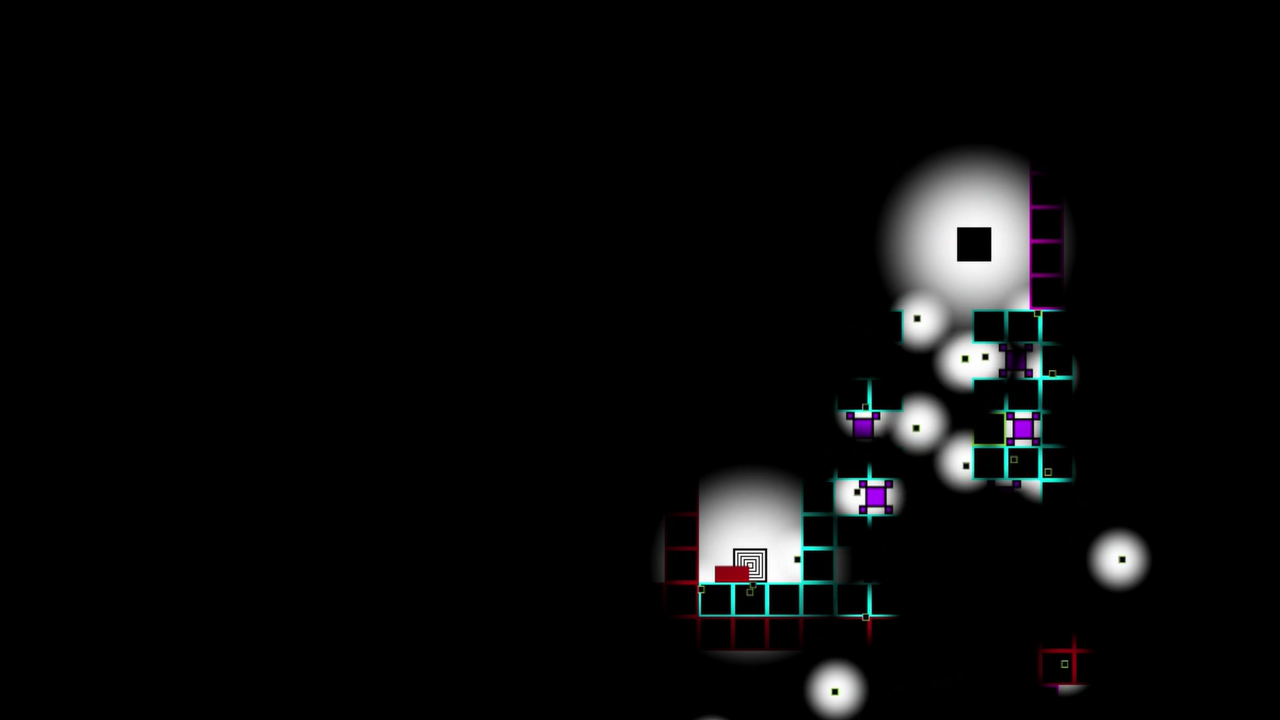Search
[{{{type}}}] {{{reason}}}
{{/data.error.root_cause}}{{{_source.title}}} {{#_source.showPrice}} {{{_source.displayPrice}}} {{/_source.showPrice}}
{{#_source.showLink}} {{/_source.showLink}} {{#_source.showDate}}{{{_source.displayDate}}}
{{/_source.showDate}}{{{_source.description}}}
{{#_source.additionalInfo}}{{#_source.additionalFields}} {{#title}} {{{label}}}: {{{title}}} {{/title}} {{/_source.additionalFields}}
{{/_source.additionalInfo}}- Details
- Category: Computer
- By Kaitlyn Gress
- Hits: 3330
Glo (PC)

Glo
Developed By: Chronik Spartan
Published By: Chronik Spartan
Released: October 23, 2017
Available On: Windows
Genre: Puzzle
ESRB Rating: none
Number of Players: Single player
Price: $4.99 on Steam
Thank you Chronik Spartan for sending us this game to review!
Glo is a challenging puzzle game that claims on its Steam page to be one of the most challenging games you will ever play, and that certainly seems to be the case with me. I have found this game very difficult, and it gets exponentially more difficult as it goes on. Glo consists of 100 levels and 4 “boss battles” (although I haven’t been able to get to any of the boss battles because the game is so hard).
Upon startup, the player is greeted with a screen with the game’s controls and items on it. Glo supports WASD, arrow keys, or controller. (I have found it easiest on controller, since the movements are a lot smoother.) The player has to press Esc or Select on the controller in order to exit this menu; the time that the controls menu is on the screen is decided by the player. Once at the main menu, the player is greeted by the game’s title, the menu buttons, and a death counter. There are five options on the main menu: “Start,” “Speed Run,” “Memories,” “Tutorial,” and “Exit.”
The first and last options are fairly obvious. Pressing “Start” will launch the player into a menu with a one-dimensional scroll of levels (and they can’t skip any). The player is only able to scroll to the level that they are on, and no further. The “Speed Run” option allows the player to see how fast they can beat the entire game, and there is a stopwatch in the upper left hand corner. The “Memories” option allows the player to see the text from any “Memories” that they have collected throughout the course of the game. The “Tutorial” option simply re-displays the controls/items screen that appears upon startup.
Strong Points: Simple story draws the player in; graphics are aesthetically pleasing; levels are challenging
Weak Points: Levels can get frustratingly difficult; music consists of one (fitting) loop track
Moral Warnings: Enemies explode upon death into a particle fest, only the inscriptions on the wall are shown and not the source
Once the player enters the first level, they are greeted with the sight of the cube that they control, and the exit. Everything except a small radius around these two things is pitch black. Some of the items in-game are there to help light up the rest of the world. If the player is using a keyboard and mouse, there is a teal crosshair to match the teal and black world theme. However, if you don’t have a 16:9 screen resolution, there are black bezels at the bottom which show the path of the cursor if it crosses through them. If the player clicks on any area in the level (which is usually very short, as the exit is almost always visible), then there will be a crosshair bullet shot that will light up the area around it. This bullet is not an item to be acquired, it is something that the player always has.
As they move on through the level, they will find that there is text written on the walls. In the first few levels, the text helps the player move on to the next level, but as time goes on, the text starts to tell a story. What kind of story it tells will be up to the player to find out, as I’m not going to spoil it here.
Each level is unique and difficult, and it requires not only puzzle-busting skills, but also lots of coordination. For example, there was a level early on that required the player to time their double jumps perfectly, which is quite hard to do because of the level of accuracy that is necessary. If, by chance, the player dies, they are respawned at the beginning of the level. They don’t need to worry about running out of lives, as they are infinite. (Thank goodness, or I would’ve ran out a long time ago!)

Higher is better
(10/10 is perfect)
Game Score - 71%
Gameplay - 14/20
Graphics - 6/10
Sound - 6/10
Stability - 5/5
Controls - 4.5/5
Morality Score - 96%
Violence - 9/10
Language - 10/10
Sexual Content - 10/10
Occult/Supernatural -9/10
Cultural/Moral/Ethical - 10/10
The graphics of Glo are quite simple, as the overwhelming majority of the structures and characters are made up of colored squares. The one loop track that is played is simple, catchy, and fitting of Glo’s atmosphere. As it goes on, enemies start to appear in levels, and they are made up of simple shapes. The text is the only thing that disturbs the simple shapes of the world; it’s slightly fanciful, but, it’s a Windows standard font, which removes some of Glo’s clean finish.
As for moral issues, Glo doesn’t seem to have many. The story seems quite innocent from what I’ve seen, and while it’s simple, it’s enjoyable and adds some depth to the game. When the shape enemies die, they explode into little tiny squares, and there’s no blood or gore involved.
Glo is a game I would recommend for those who are patient and like a good challenge. If you’re the type of person to rage quit from dying at the last second, then Glo is absolutely not for you. If you like stories and puzzle platformers, then Glo is definitely worth checking out!
- Kittycathead








